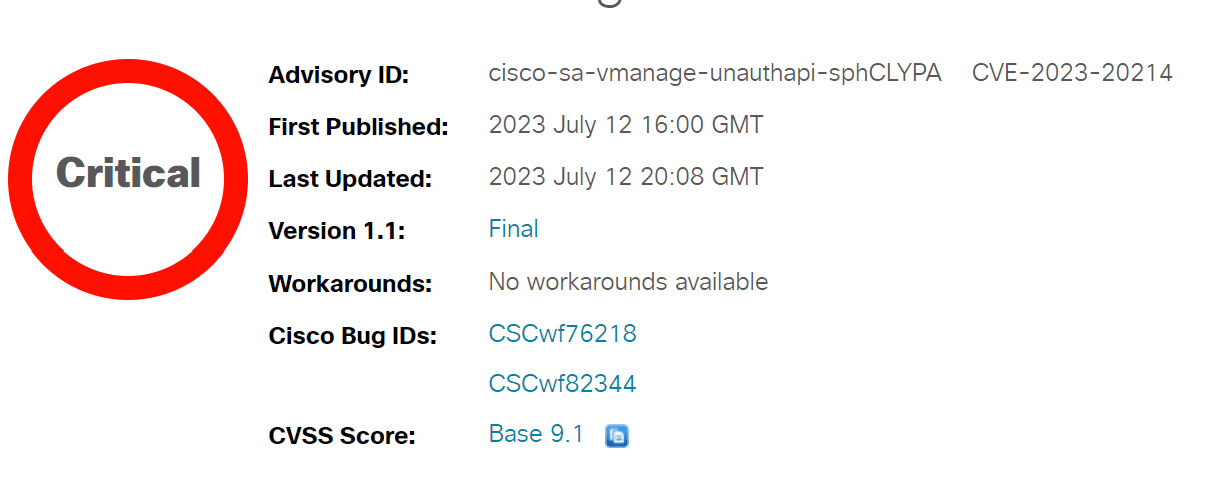
Cisco released security updates to address a critical severity vulnerability found in the Cisco SD-WAN vManage software. This vulnerability is tracked as CVE-2023-20214 vulnerability, with a CVSS score of 9.1.
The shadowy foe in this narrative is a security flaw found within the request authentication validation for Cisco’s SD-WAN vManage software’s REST API. This menace, lurking quietly within the system, could potentially offer an unauthenticated, remote attacker the golden keys to the configuration of an affected Cisco SD-WAN vManage instance.

The root cause is traced back to deficient request validation protocols within the REST API feature. Left unchecked, this weakness invites nefarious elements to craft malevolent API requests, capable of penetrating the security parameters of affected vManage instances.
A successful execution of this exploit could lead to two worrying outcomes. The first involves the malefactor gaining the ability to retrieve sensitive information from the configuration of the affected Cisco vManage instance, a daunting prospect for any network administrator. Equally unsettling, the assailant could transmit information into the configuration, causing unprecedented havoc.
What makes this vulnerability particularly insidious is its limited scope. The breach only affects the REST API, leaving the web-based management interface and the Command Line Interface (CLI) unscathed and, thus, diverting suspicion from the true source of the vulnerability.
CVE-2023-20214 bug affects vulnerable releases of Cisco SD-WAN vManage software:
| Cisco SD-WAN vManage Release | First Fixed Release |
|---|---|
| 18.3 | Not affected. |
| 18.4 | Not affected. |
| 19.1 | Not affected. |
| 19.2 | Not affected. |
| 20.1 | Not affected. |
| 20.3 | Not affected. |
| 20.4 | Not affected. |
| 20.5 | Not affected. |
| 20.6.1 | Not affected. |
| 20.6.2 | Not affected. |
| 20.6.3 | Not affected. |
| 20.6.3.1 | Not affected. |
| 20.6.3.2 | Not affected. |
| 20.6.3.3 | 20.6.3.4 |
| 20.6.4 | 20.6.4.2 |
| 20.6.5 | 20.6.5.5 |
| 20.7 | Migrate to a fixed release. |
| 20.8 | Migrate to a fixed release. |
| 20.9 | 20.9.3.2 |
| 20.10 | 20.10.1.2 |
| 20.11 | 20.11.1.2 |
Fortunately, Cisco has mobilized swiftly to address this lurking threat, releasing software updates designed to patch the chink in its cybersecurity armor. Albeit, there exist no direct workarounds to neutralize this vulnerability.
However, network administrators can deploy their first line of defense by enabling Access Control Lists (ACLs). By limiting access to the vManage instance, ACLs can provide a significant bulwark against potential attacks, thus substantially shrinking the attack surface.
In cloud-hosted deployments, access to vManage can be restrained by ACLs that are composed of permitted IP addresses. Network administrators should conduct a meticulous review and modification of permitted IP addresses within the ACLs. Similarly, on-premises deployments can limit vManage access by implementing ACLs and configuring permitted IP addresses.
As of now, the Cisco Product Security Incident Response Team (PSIRT) is not aware of any public announcements or malicious uses of this vulnerability.